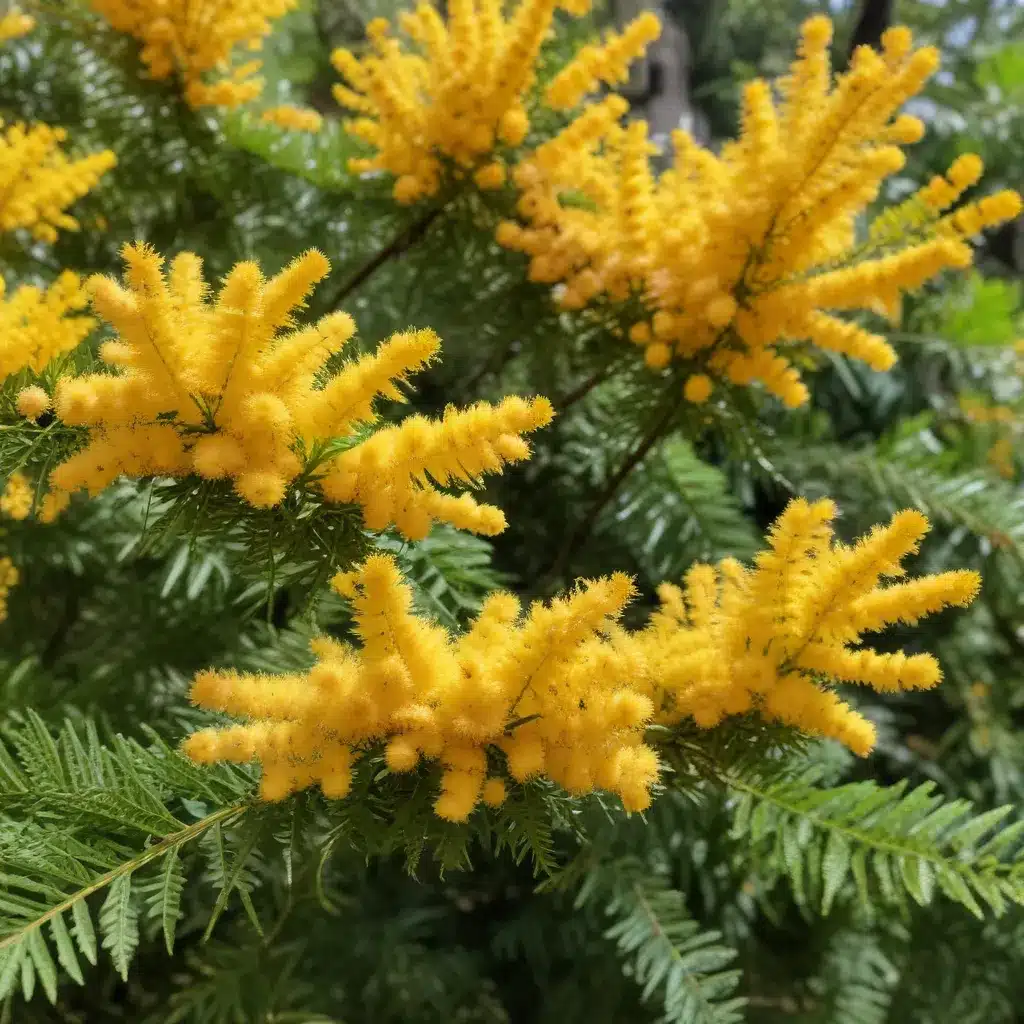
The mimosa (Albizia julibrissin), a member of the pea family (Fabaceae), is a captivating tree renowned for its vibrant, powder-puff-like blooms that dance atop delicate, fernlike foliage. As a fixture of landscapes across the southern United States, this deciduous tree offers a breathtaking floral display each summer, delighting all who encounter its mesmerizing presence. TriCounty Tree Care invites you to explore the wonders of this botanical marvel.
Botany of the Mimosa
Plant Taxonomy and Classification
The mimosa belongs to the genus Albizia, a diverse group of over 150 tree and shrub species native to tropical and subtropical regions of Africa, Asia, and the Americas. Within the genus, the Persian silk tree (A. julibrissin) stands out as the most widely cultivated and recognized species. Classified as a member of the Fabaceae family, the mimosa is closely related to other familiar legumes like beans, peas, and locust trees.
Mimosa Plant Anatomy and Morphology
The mimosa is a small to medium-sized tree, typically reaching heights of 20-40 feet (6-12 m) at maturity. Its trunk is usually short and multi-trunked, with a rounded, spreading canopy of delicate, bipinnately compound leaves. Each leaf is composed of numerous, fine, fern-like leaflets that fold inward when touched, a trait known as thigmonasty. This captivating response to stimuli has earned the mimosa the nickname “sensitive plant.”
Mimosa Habitat and Distribution
Native to regions stretching from Iran to Japan, the mimosa has been widely introduced and naturalized across the southeastern United States, where it thrives in full sun and well-drained soils. In its native range, the mimosa is found in diverse habitats, including forests, grasslands, and even coastal areas. Its adaptability and tolerance of poor soil conditions have contributed to its successful establishment in disturbed, urban, and suburban environments across its introduced range.
Mimosa Flower Anatomy and Appearance
Floral Structure and Characteristics
The mimosa’s most enchanting feature is undoubtedly its spectacular floral display. The flowers are arranged in large, spherical, pompom-like clusters, each composed of numerous tiny, individual blossoms. Each blossom features a central column of numerous, long, silky stamens that radiate outward, creating the signature fluffy appearance. The petals themselves are small and inconspicuous, overshadowed by the showy stamens.
Bloom Patterns and Seasonality
Mimosas bloom profusely during the summer months, typically from June through August. In warmer climates, the trees may continue flowering into early fall. The blooms emerge from the previous year’s growth, with new floral clusters unfolding in succession along the branches, ensuring a prolonged and captivating display.
Mimosa Flower Colors and Variations
While the most common mimosa flowers are a vibrant, soft pink, there are several cultivars and varieties that showcase a range of hues. Shades can vary from deep, rich fuschia to delicate, pale lavender. Some rare forms even exhibit white or bicolored blooms, adding to the tree’s visual appeal and versatility in the landscape.
Mimosa Ecosystem Interactions
Pollinators and Nectar Production
The mimosa’s nectar-rich flowers are a magnet for a variety of pollinators, including bees, butterflies, and hummingbirds. These visitors are drawn to the abundant, sweet nectar produced by the blossoms, which in turn facilitates cross-pollination and seed set for the tree.
Herbivores and Mimosa Defense Mechanisms
The mimosa’s finely divided, fernlike leaves contain a unique chemical compound called mimosine, which acts as a natural defense against herbivores. This compound can be toxic to some animals, deterring them from consuming the foliage. Additionally, the tree’s ability to rapidly fold its leaves in response to touch or vibration is thought to be an evolutionary adaptation to discourage grazing.
Mimosa in Plant Communities
In its native and introduced ranges, the mimosa often serves as a pioneer species, colonizing disturbed or abandoned areas. Its fast growth and prolific seed production allow it to quickly establish a presence and outcompete other plants. However, the tree’s tendency to self-seed aggressively can also lead to it becoming an invasive species in certain regions, where it may disrupt the balance of local ecosystems.
Cultural and Historical Aspects of Mimosa
Symbolic Meanings and Folklore
The mimosa has long held symbolic significance in various cultures. In parts of Asia, the tree is associated with female beauty, grace, and sensitivity, while in the Middle East, it is linked to themes of friendship and hospitality. The mimosa’s delicate, ephemeral blooms have also inspired poetic and artistic interpretations, representing the fleeting nature of life and the transience of earthly pleasures.
Mimosa in Art, Literature, and Horticulture
The mimosa’s captivating appearance has made it a popular subject in art, literature, and horticulture. Impressionist painters, such as Claude Monet, often featured the tree’s shimmering blossoms in their works, while writers like Henry David Thoreau and Kahlil Gibran have woven the mimosa’s symbolism into their writings. In the realm of horticulture, the mimosa has become a beloved ornamental tree, prized for its stunning floral display and graceful form.
Mimosa Cultivation and Medicinal Uses
Beyond its aesthetic appeal, the mimosa has also found applications in traditional medicine. Extracts from the tree’s bark, leaves, and flowers have been used to treat a variety of ailments, including inflammation, fever, and digestive issues. In some regions, the tree’s wood is even harvested for use in furniture and construction. However, it’s important to note that the mimosa’s mimosine content can be toxic if consumed in large quantities, so any medicinal or culinary use should be approached with caution.
As you stroll through your neighborhood or local park, keep an eye out for the magnificent mimosa, a true botanical marvel that captivates the senses and sparks the imagination. TriCounty Tree Care encourages you to marvel at the beauty of this enchanting tree and to appreciate the many ways it enriches our natural world. For all your tree care needs, be sure to visit www.tricountytreecare.com.


